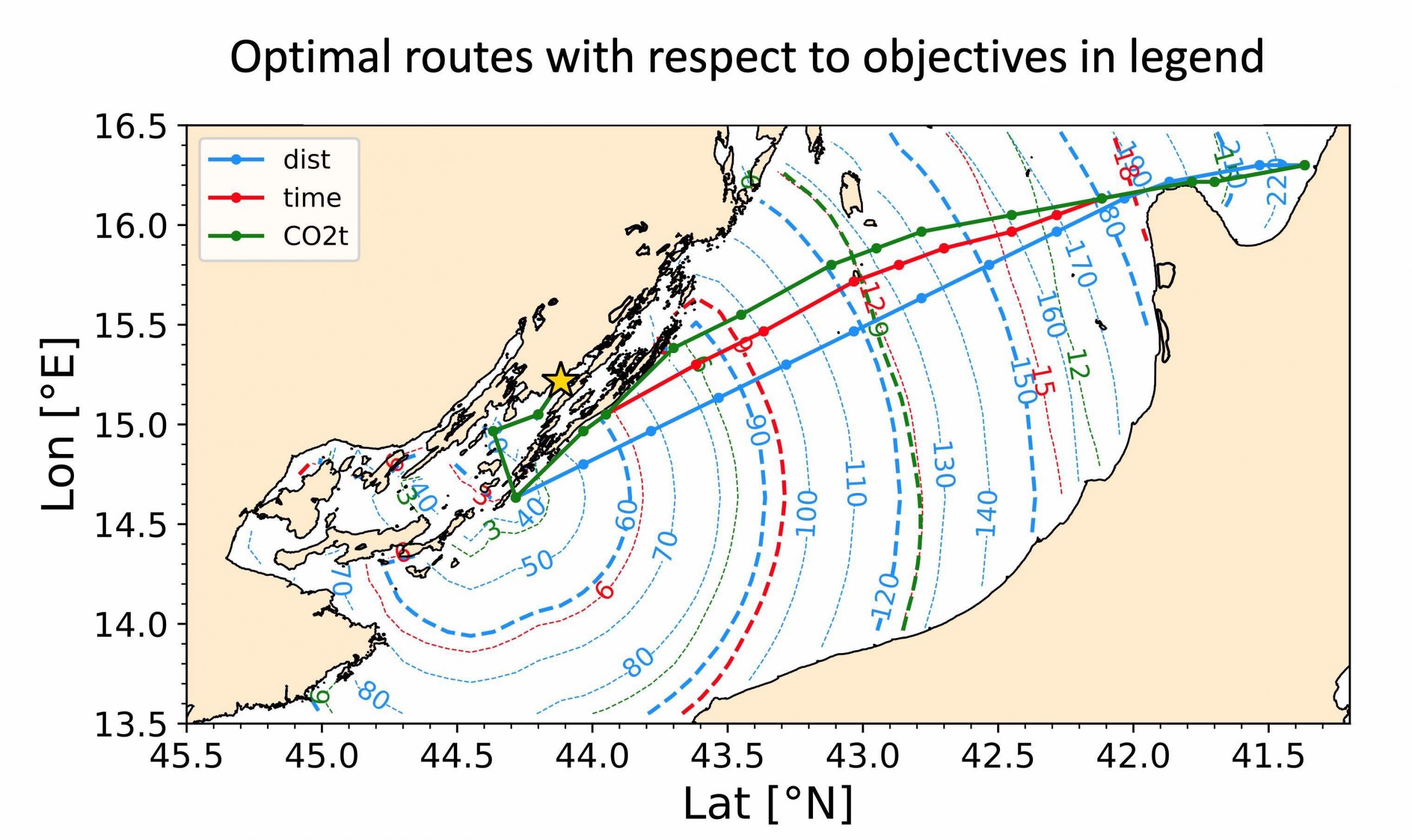
What CO2 savings are potentially attainable through path optimization? How much can ferries’ carbon intensity be decreased? What is the role of waves and currents? A new study led by the CMCC Foundation shows how the future least-CO2 ferry routes could look like.
Energy efficiency or carbon intensity (defined as CO2 emissions per transport work, ed.) is a possible point of convergence between the International Maritime Organization (IMO) and EU regulations to cut GHG emissions and decarbonize shipping. Short term measures to increase energy efficiency and achieve carbon intensity savings include voyage optimization.
A new study led by the CMCC Foundation, realized in the framework of the Interreg Italy-Croatia GUTTA project and recently published in the Journal of Marine Science and Engineering, explores the potential of carbon intensity reduction through voyage optimization in short sea shipping.
To this purpose, the VISIR (discoVerIng Safe and effIcient Routes) ship routing model was upgraded to a “VISIR-2” version, for computing least-CO2 routes for a ferry in presence of waves and currents.
“VISIR can compute optimal routes by suggesting a spatial diversion which leads to avoidance of rough sea and related ship speed loss”, explains Gianandrea Mannarini, senior scientist at the CMCC Foundation and Lead author of the study. “Besides least-distance and least-time routes, we added in the latest VISIR version a capacity to compute routes of least-CO2 emissions. Moreover, a more accurate vessel model was introduced in VISIR-2 making use of a coupled bridge-engine room simulator hosted by the GUTTA project partner University of Zadar, from which the performance and emissions of a ferry were estimated at various sea conditions.
 Graphical abstract of the paper
Graphical abstract of the paper
The Adriatic Sea, which is routinely crossed by several ferry lanes joining ports in Italy with ports in Croatia, Montenegro, and Albania, was an interesting candidate domain for testing the role of route optimization on short sea shipping. It is relatively small and characterized by not too rough seas. Therefore, if optimization works there, it is scalable to bigger and stormier basins of the world ocean.
On top of that, ferries are quite relevant for emissions, as they account for about 10% of the CO2 emissions in the EEA, despite they represent just 3% of the fleet due to report it (more information here). At International level, there currently is a vivid regulatory activity for curbing ship emissions, and operational measures such a voyage optimization, are considered in the short term.
Therefore, CMCC researchers tried to assess whether path optimization can play a role even for ferries in the Adriatic, what CO2 savings are potentially attainable, and how much ferries’ carbon intensity can be decreased. In order to highlight the role of waves and sea currents in the optimization, CMEMS (Copernicus – Marine Environment Monitoring Service) ocean analysis products related to waves and sea currents were used.
“Our results support the thesis that voyage optimization could be a viable operational measure for short-sea shipping to meet short-term targets for both absolute emission and carbon intensity reduction” comments Mannarini. “For a case study, we found out carbon intensity savings up to 11%, and this is an encouraging outcome towards both IMO and EU curbing targets. We now aim to produce more statistically significant estimations through a web tool we are going to develop in the frame of the Italy-Croatia Interreg project GUTTA.”
The study was realized in the framework of GUTTA project. More information on GUTTA aims and activities here.
For further information, read the integral version of study:
Towards Least-CO2 Ferry Routes in the Adriatic Sea
Mannarini G., Carelli L., Orović J., Martinkus C.P., Coppini G.
2021, Journal of Marine Science and Engineering, 9 (2), DOI: 10.3390/jmse9020115


